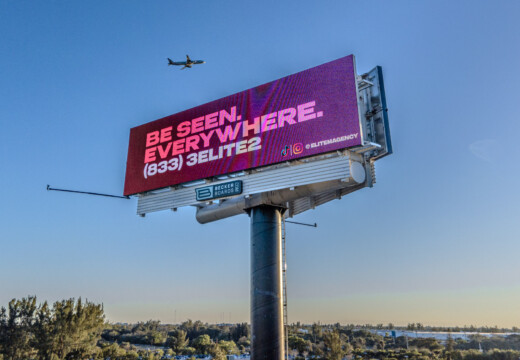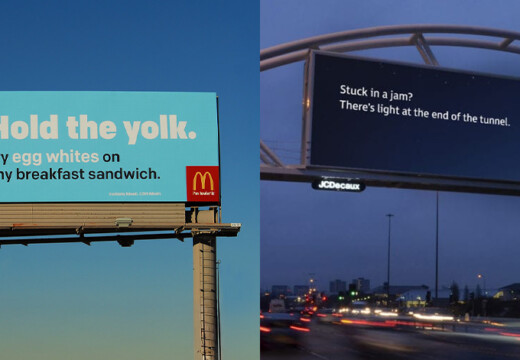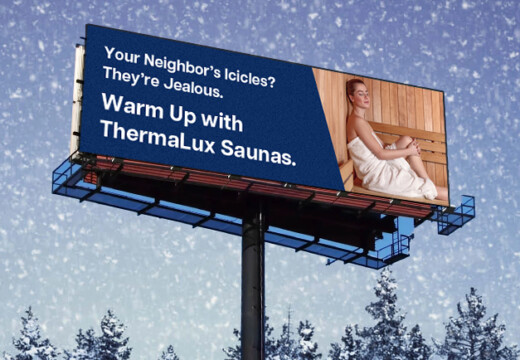Out-of-home (OOH) advertising is highly effective during peak travel seasons, reaching 90% of U.S. residents monthly, with 65% taking action after seeing an ad. Travelers are more engaged and open to discovery, making this the perfect time to advertise. Here’s how to succeed:
- Focus on Key Locations: Highways, transportation hubs, and tourist hotspots are prime spots to grab attention. For example, 71% of travelers notice billboards while traveling.
- Time Campaigns Wisely: Align ads with travel-heavy periods like summer vacations or holidays. Use mobile location data to target the right time and place, boosting success by 24%.
- Simplify Billboard Design: Stick to short messages (7 words max) and bold visuals to ensure your ad is noticed within 5-7 seconds.
- Leverage Digital Tools: Digital billboards allow real-time updates and tailored content, improving recall rates by 55% compared to static ads.
Targeted Advertising Coming To Highway Digital Billboards
Selecting High-Impact Ad Locations
Travel season provides a great chance to connect with audiences on the move. Research shows 71% of travelers pay attention to billboard messages while traveling . This makes ad placement critical for capturing their interest.
Major Travel Routes
Busy interstate highways and popular vacation routes are excellent spots for ads. These locations ensure visibility, even at highway speeds, where ads should be readable within 5-7 seconds .
Take I-95 on the East Coast as an example. This route sees heavy summer traffic, making it perfect for seasonal campaigns. Digital billboards here can display content that changes based on factors like time of day or weather, keeping messages relevant for travelers.
These strategies on major routes lay the groundwork for more focused advertising in specific hubs.
Transportation Hubs
Transportation hubs are ideal for reaching travelers during longer wait times. For example, the digital displays at Orlando International Airport connect with 50 million passengers annually .
Key spots to target include:
- Baggage claim areas where travelers wait for luggage
- Security checkpoints with high foot traffic
- Ground transportation zones where passengers linger
- Terminal concourses where people spend time before flights
Platforms like Blip allow advertisers to schedule messages during peak travel times, ensuring maximum exposure.
Tourist Areas
Tourist-heavy locations offer a strong opportunity to boost brand recall – up to 40% higher than in other areas .
The most effective placements focus on:
- Roads leading to major attractions
- High-traffic areas between hotels and popular spots
- Entrances to entertainment districts
For instance, Las Vegas uses billboards along I-15 as travelers approach the city . These placements catch people’s attention when they’re most open to destination-specific ads.
To get the most out of these locations, advertisers can work with local tourism boards to understand visitor trends and seasonal patterns. This approach ties directly into the timing strategies discussed next.
Campaign Timing and Scheduling
Each year, 49 million Americans travel during the Thanksgiving holiday alone . This creates a massive opportunity for campaigns that are carefully timed and strategically placed to reach these travelers.
Planning Around Peak Travel Periods
Timing your OOH (out-of-home) campaigns to coincide with major travel waves can make a huge difference. For example, 85% of Americans plan summer vacations, with nearly half taking trips lasting two weeks or more . This extended travel season allows for longer-lasting advertising exposure.
Here’s a breakdown of key travel periods and focus areas:
| Season | Peak Times | Advertising Focus |
|---|---|---|
| Summer | June-August | Vacation spots, outdoor activities, refreshments |
| Winter Holidays | Late November-December | Retail, entertainment, family gatherings |
| Spring Break | March-April | Tourism, hospitality, local attractions |
Using mobile location data can make your campaigns even more effective. According to the OAAA, this approach boosts campaign success by 24% . By analyzing actual travel patterns, you can pinpoint the best times and locations for your ads.
Targeting by Time of Day
The time of day also plays a crucial role in how well your campaign performs. For example, CVS Health saw a 27% increase in store visits by running ads tailored to morning and evening routines .
Here are some effective time-of-day strategies:
- Morning Rush (6-9 AM): Promote breakfast deals or daily essentials.
- Mid-Day (11 AM-2 PM): Highlight lunch specials or midday activity ideas.
- Evening Drive (4-7 PM): Focus on dinner options or entertainment plans.
- Late Night (8-11 PM): Advertise nightlife spots or next-day planning tools.
Weather-based campaigns can also be a game-changer, with summer sales increasing by 23% when ads respond to real-time weather conditions . This approach ensures your message stays relevant and timely, connecting with audiences in the moment.
sbb-itb-2e2e93f
Billboard Design for Travelers
Strategic placement and timing are crucial, but the design itself is what ensures your billboard grabs attention and sticks with travelers on the go.
Message Simplification
When designing billboards for travelers, simplicity is key. Short, impactful messages – ideally no more than 7 words – can boost recall by up to 40%. Travelers often have just 5-7 seconds to take in your message.
Here’s what works:
- Use clear, straightforward language.
- Highlight one main benefit or call-to-action.
- Choose high-contrast text and background combinations.
- Stick to clean, easy-to-read fonts.
Visual Design Elements
Digital billboards outperform static ones with a 55% recall rate versus 49%, thanks to their dynamic and eye-catching nature. To make your design effective, focus on:
- High-contrast colors that stand out, even in daylight.
- A single, bold image to draw attention.
- Clean layouts with plenty of space to avoid clutter.
- Branding that’s noticeable but doesn’t overwhelm the design.
Seasonal Ad Content
Tailoring your billboard to fit the season can make it even more engaging. Use seasonal themes and align your design with travel trends during specific times of the year. For example:
- Include well-known landmarks from popular tourist spots.
- Use seasonal colors – like warm tones for summer or cool shades for winter.
- Feature imagery that reflects seasonal activities.
- Promote offers tied to key travel periods, as discussed in Campaign Timing.
For instance, a summer-themed ad might show a bright beach scene with a message like "Cool drinks ahead – Exit 22" in bold, contrasting colors.
Performance Tracking and Analysis
Digital OOH platforms make it easier to fine-tune campaigns by providing real-time data tracking. These tools offer insights that are especially useful for evaluating travel-season advertising.
Digital Performance Monitoring
Platforms like Blip provide real-time analytics through user-friendly dashboards. Advertisers can monitor key metrics such as:
- Impressions and reach: Understand how many people see the ad.
- Time-of-day performance: Identify when ads perform best.
- Location-specific engagement: Compare results across different areas.
- Mobile interaction patterns: Track how users engage with ads on their devices.
For example, McDonald’s UK utilized mobile data combined with sales figures to boost store visits by 5.6%, directly linked to their OOH campaigns .
When running travel-focused campaigns, focus on these metrics:
| Metric | Why It Matters |
|---|---|
| Peak Hours | Helps schedule ads during high-traffic periods. |
| Location Engagement | Compares performance in highways vs. tourist spots. |
ROI Measurement Methods
Top advertisers use a mix of mobile data and sales analytics to measure campaign success accurately.
Here are some effective strategies:
1. Direct Response Tracking
Use unique QR codes or dedicated URLs to measure immediate engagement with your ads.
2. Geographic Attribution
Geo-fencing technology allows you to track:
- Mobile device interactions
- Foot traffic trends
- Cross-device behaviors
3. Multi-Channel Impact Analysis
Analyze how billboards enhance digital ad performance and drive in-store visits, especially during busy travel seasons. This is particularly useful during holidays when travelers engage with multiple touchpoints.
Set up these tools before launching your campaign to establish benchmarks. This enables real-time adjustments as travelers interact with your ads, ensuring your campaign stays effective and aligned with the location and timing strategies mentioned earlier.
Key Takeaways
To create successful travel-season OOH campaigns, focus on three main principles: strategic placement, precise timing, and traveler-focused designs, all backed by thorough performance tracking.
| Strategy Component | Key Elements |
|---|---|
| Location Selection | Highway visibility (Section 2.1) and tourist area placements (2.3) |
| Timing Optimization | Seasonal trends (3.1) and dayparting strategies (3.2) |
| Design Execution | Clear messaging and bold visuals |
| Performance Tracking | Digital analytics and mobile data insights |
To maximize impact, advertisers should:
- Leverage programmatic platforms for quick adjustments to campaigns.
- Tailor ads to local context, using regional landmarks or themes that resonate with travelers.
- Keep designs simple, ensuring messages are easy to grasp in just a few seconds.


